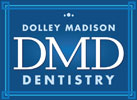What is a dry socket?
Do I have a Dry Socket?
What is a dry socket?
When the tooth has been taken out, a socket is left behind. After a tooth is extracted, a blood clot starts to form in the socket to protect the bone and nerves underneath. At times that clot can become dissolved or dislodged in a couple of days after the extraction, leaving the bone and nerve exposed to food, air, fluid and anything else. The open would in the mouth can be a channel for infection and severe pain that can last for five or six days may occur.
The typical scenario for a dry socket is the occurrence of throbbing pain about two to four days after the tooth is removed. Dentists often characterize dry socket by foul taste and bad breath in the patient's mouth. At this point, things become fairly apparent that healing in indeed interrupted.
Dry socket is a condition in which there is inflammation of the alveolar bone (or jawbone) after a tooth extraction. It is also known to as "alveolar osteitis" and is one of the many complications that can occur from a tooth extraction. The incidence of dry socket is quite rare, occurring in only about 2% of exodontia. Still, that percentage rises to at least 20% when it involves the removal of mandibular impacted third molars (lower wisdom teeth).
A dry socket is caused by the total or partial loss of a blood clot in the tooth socket after a tooth extraction. Whenever a tooth is extracted, a blood clot will form as the first step in the healing process. This step is to cover and protect the underlying jawbone. Lost of the blood clot, or cases, where the blood clot is unable to form, causes the bone to be exposed, and healing is delayed.
A dry socket is a result of chemical, bacterial, mechanical, and physiologic factors. Below are examples for each:
Chemical: Smokers usually have a decrease in the blood supply in the mouth due to the nicotine in the cigarette. Hence, the blood clot may fail to form at the site of a recent tooth extraction.
Bacterial: the Preexisting infection that is present in the mouth before a dental extraction. For example, periodontal disease (or periodontitis) can prevent proper formation of a blood clot. There are certain oral bacteria can cause the breakdown of the clot.
Physiologic: Hormones, dense jawbone, or inadequate blood supply are factors that prevent blood clot formation. For this reason, the dentist would often calm patients down and ask patients to relax for the following few days so that the healing can take place properly.
Mechanical: Sucking through a straw, aggressive rinsing, spitting, or dragging on a cigarette causes dislodgement and loss of the blood clot. Mechanical trauma to the extraction site can be costly and causing much discomfort.
In conclusion, dry socket is undesirable and is the complication of a post-extraction case. Therefore for patients undergoing dental extractions, it is advisable for them to make sure they are taking the proper diet, do not smoke right after completion of the removal. The climate is also a factor influencing the frequency of dry sockets among patients. Hence, patient education is essential and is the responsibility of the dental healthcare providers to do so. If you have questions about dry sockets in McLean, Virginia, or any other dental procedure, please call our office today at 703-356-7890.




